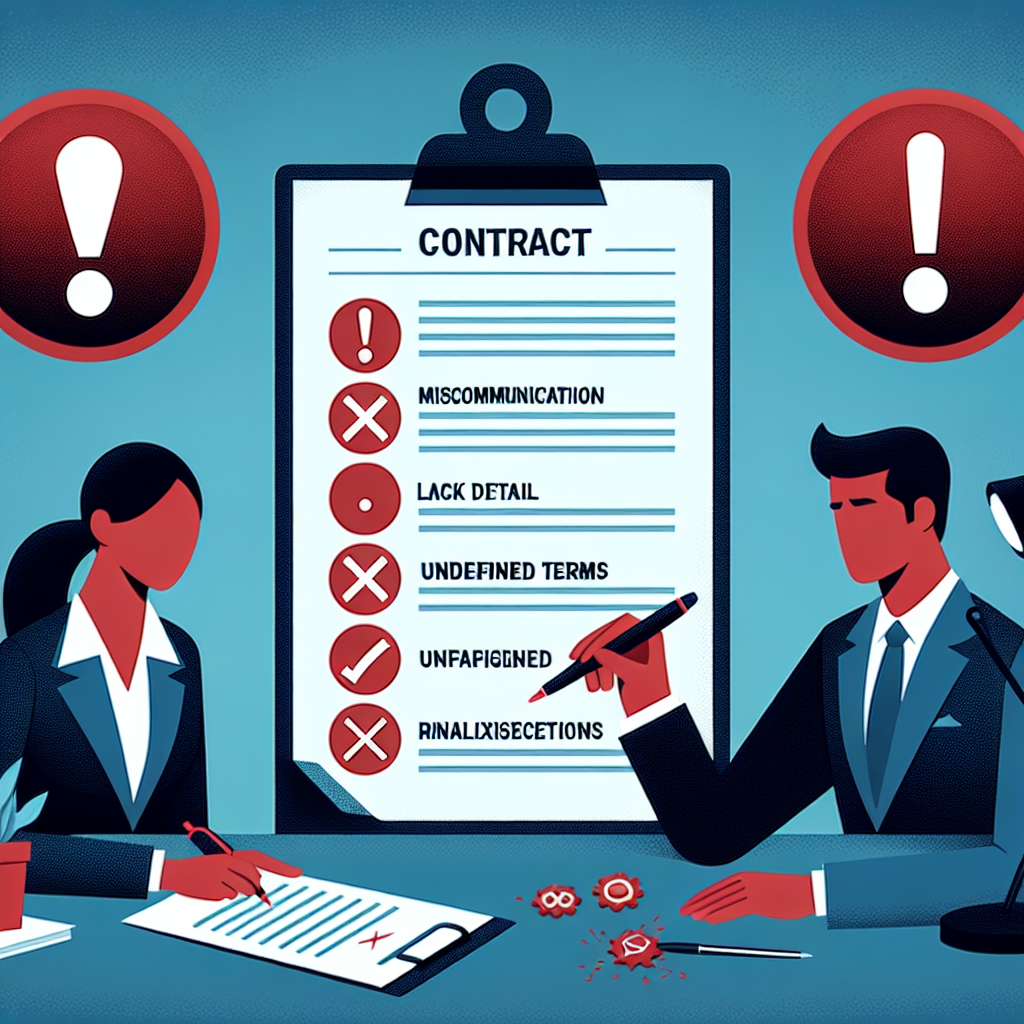Your cart is currently empty!
Tag: SLA

Best Practices for Monitoring and Measuring SLA Performance
Service Level Agreements (SLAs) are essential for ensuring that service providers meet the expectations and requirements of their clients. However, simply having an SLA in place is not enough – it is equally important to monitor and measure the performance of the service provider to ensure that the agreed-upon standards are being met. Here are some best practices for monitoring and measuring SLA performance:1. Define Clear Metrics: The first step in monitoring and measuring SLA performance is to define clear and measurable metrics that align with the goals and objectives of the SLA. These metrics should be specific, measurable, achievable, relevant, and time-bound (SMART) to provide a clear benchmark for evaluating performance.
2. Establish Monitoring Tools: Implement monitoring tools and systems to track key performance indicators (KPIs) in real-time. These tools can help identify any deviations from the agreed-upon standards and enable timely intervention to address potential issues before they escalate.
3. Regularly Review Performance Data: Regularly review performance data to identify trends and patterns that may impact SLA performance. Conducting regular performance reviews can help identify areas for improvement and ensure that the service provider is meeting the expectations outlined in the SLA.
4. Conduct Periodic Audits: In addition to monitoring performance data, conduct periodic audits to assess compliance with the SLA terms and conditions. Audits can help identify any discrepancies or gaps in performance and provide insights into areas that require improvement.
5. Communicate with Stakeholders: Keep all stakeholders informed about SLA performance through regular communication and reporting. Providing transparent and timely updates on performance metrics can help build trust and confidence in the service provider’s ability to meet SLA requirements.
6. Implement Continuous Improvement: Use the data and insights gathered from monitoring and measuring SLA performance to drive continuous improvement initiatives. Collaborate with the service provider to identify opportunities for enhancing service delivery and increasing customer satisfaction.
7. Resolve Issues Promptly: In the event of SLA breaches or performance issues, take immediate action to address the root cause and prevent recurrence. Work closely with the service provider to develop action plans and timelines for resolving any issues and meeting SLA requirements.
By following these best practices for monitoring and measuring SLA performance, service providers can ensure that they are meeting the expectations of their clients and delivering high-quality services that align with the terms and conditions of the SLA. Effective monitoring and measurement of SLA performance are essential for building strong relationships with clients and maintaining a reputation for reliability and excellence in service delivery.

Key Components of a Successful Service Level Agreement (SLA)
A Service Level Agreement (SLA) is a crucial document that outlines the expectations and responsibilities of both parties in a service provider-client relationship. A well-crafted SLA can help ensure that both parties are on the same page and can help prevent misunderstandings and disputes down the line. Here are some key components of a successful SLA:1. Service Description: The SLA should clearly outline the services that will be provided by the service provider. This includes a detailed description of the scope of work, the expected deliverables, and any limitations or exclusions.
2. Service Level Objectives (SLOs): SLOs define the expected level of service that the provider will deliver. This may include metrics such as uptime, response times, and resolution times. SLOs should be realistic and measurable to ensure that both parties can track performance and hold each other accountable.
3. Performance Metrics: It is important to include specific performance metrics in the SLA that will be used to measure the provider’s performance. This may include metrics such as availability, response time, resolution time, and customer satisfaction. These metrics should be clear, objective, and easily measurable.
4. Responsibilities and Duties: The SLA should clearly outline the responsibilities and duties of both parties. This includes the responsibilities of the service provider in delivering the services, as well as the responsibilities of the client in providing necessary information and access. Clear delineation of responsibilities can help prevent misunderstandings and ensure that both parties are aware of their obligations.
5. Escalation Procedures: In the event of a service issue or dispute, it is important to have clear escalation procedures in place. This may include a hierarchy of contacts, a process for escalating issues, and timelines for resolution. Having clear escalation procedures can help ensure that issues are addressed in a timely manner and that both parties are on the same page.
6. Service Level Credits: In the event that the service provider fails to meet the agreed-upon SLOs, the SLA should outline the process for issuing service level credits. This may include a formula for calculating credits, timelines for issuing credits, and any limitations on credits. Service level credits can help incentivize the provider to meet their obligations and compensate the client for any service failures.
In conclusion, a successful SLA should be clear, comprehensive, and measurable. By including key components such as service description, SLOs, performance metrics, responsibilities, escalation procedures, and service level credits, both parties can ensure a successful and productive working relationship. A well-crafted SLA can help set expectations, prevent misunderstandings, and ensure that both parties are working towards a common goal.

How to Craft an Effective Service Level Agreement (SLA)
A Service Level Agreement (SLA) is a crucial document that outlines the expectations and responsibilities of both parties in a service provider-client relationship. It serves as a roadmap for the service provider to deliver the promised services and for the client to receive the expected level of service. Crafting an effective SLA is essential to ensure clear communication, accountability, and mutual understanding between both parties. Here are some key steps to help you craft an effective SLA:1. Define clear objectives and goals: Before you start drafting the SLA, it’s important to clearly define the objectives and goals of the services being provided. This will help you set realistic expectations and ensure that both parties are on the same page.
2. Identify key metrics and performance indicators: It’s essential to identify the key metrics and performance indicators that will be used to measure the success of the services being provided. This could include metrics such as response time, uptime, resolution time, and customer satisfaction.
3. Set realistic targets and timelines: When setting targets and timelines in the SLA, it’s important to be realistic and achievable. Unrealistic targets can lead to dissatisfaction and frustration on both sides. It’s also important to build in some flexibility to account for unforeseen circumstances.
4. Define roles and responsibilities: Clearly outline the roles and responsibilities of both parties in the SLA. This will help prevent misunderstandings and ensure that everyone knows what is expected of them.
5. Include escalation procedures: It’s important to include escalation procedures in the SLA in case any issues or disputes arise. This will help resolve conflicts quickly and ensure that the services are delivered smoothly.
6. Review and revise regularly: Once the SLA is in place, it’s important to review and revise it regularly to ensure that it remains relevant and effective. As the business evolves and changes, the SLA may need to be updated to reflect these changes.
In conclusion, crafting an effective SLA is essential for a successful service provider-client relationship. By defining clear objectives, setting realistic targets, and outlining roles and responsibilities, you can ensure that both parties are on the same page and working towards a common goal. Regularly reviewing and revising the SLA will help keep it up to date and ensure that the services are delivered as promised.

The Future of Service Level Agreements: Trends and Innovations in SLA Management
Service Level Agreements (SLAs) have long been a staple in the world of business, providing a formal agreement between a service provider and a customer on the level of service that will be provided. However, as technology continues to evolve and customer expectations shift, the future of SLAs is also changing. In this article, we will explore some of the trends and innovations in SLA management that are shaping the future of service agreements.One of the key trends in SLA management is the shift towards more dynamic and flexible agreements. Traditional SLAs often involve fixed terms and metrics that may not always be relevant or reflective of the actual service being provided. In response to this, many organizations are moving towards more agile SLAs that can be adjusted in real-time based on changing customer needs and service capabilities. This allows for a more responsive and customer-centric approach to service delivery, ensuring that SLAs remain relevant and effective.
Another trend in SLA management is the increasing use of automation and artificial intelligence (AI) to streamline the monitoring and management of service agreements. AI-powered tools can analyze large amounts of data in real-time, flagging potential issues or deviations from SLA requirements before they become major problems. This proactive approach to SLA management can help to prevent service disruptions and improve overall service quality, leading to higher customer satisfaction and retention.
Additionally, there is a growing focus on outcome-based SLAs, where the emphasis is on the end result or value delivered to the customer, rather than simply meeting predefined service metrics. This shift towards outcome-based SLAs aligns more closely with the business goals of both the service provider and the customer, ensuring that SLAs are truly driving value and contributing to business success.
Innovations in SLA management are also being driven by the increasing complexity and interconnectedness of modern IT environments. As organizations adopt cloud services, IoT devices, and other emerging technologies, the traditional one-size-fits-all approach to SLAs is no longer sufficient. Instead, organizations are looking for more flexible and customizable SLA models that can accommodate the unique requirements of their specific technology stack and service ecosystem.
Overall, the future of service level agreements is evolving to meet the changing needs of businesses and customers in the digital age. By embracing dynamic, AI-driven, and outcome-based SLAs, organizations can ensure that their service agreements remain relevant, effective, and value-driven in an increasingly complex and competitive business environment.

Measuring Success: Monitoring and Reporting on SLA Performance
Service Level Agreements (SLAs) are a crucial component of any business relationship, outlining the level of service expected from a provider. However, simply having an SLA in place is not enough. Monitoring and reporting on SLA performance is essential to ensure that both parties are meeting their obligations and that the agreed-upon service levels are being delivered.Measuring success in terms of SLA performance involves tracking key performance indicators (KPIs) and metrics that align with the specific terms of the SLA. These metrics may include response times, resolution times, uptime, and overall service quality. By monitoring these metrics regularly, businesses can identify any areas where performance may be lacking and take corrective action to address these issues.
One of the key benefits of monitoring and reporting on SLA performance is that it provides transparency and accountability for both parties. Service providers can demonstrate their commitment to meeting the agreed-upon service levels, while clients can ensure that they are receiving the level of service they are paying for. This transparency can help build trust and strengthen the business relationship over time.
In addition to tracking performance metrics, it is also important to report on SLA performance regularly. This may involve providing regular updates to clients on performance against SLA targets, as well as conducting periodic reviews to assess overall performance and identify areas for improvement. Reporting on SLA performance can help both parties stay informed and aligned on expectations, as well as provide a basis for ongoing improvement and optimization of service delivery.
In conclusion, monitoring and reporting on SLA performance is essential for measuring success and ensuring that both parties are meeting their obligations. By tracking key performance indicators and providing regular updates on performance, businesses can build trust, demonstrate accountability, and drive continuous improvement in service delivery. By prioritizing SLA performance monitoring and reporting, businesses can strengthen their relationships with clients and ensure the continued success of their service offerings.

Monitoring and Measuring Performance under a Service Level Agreement (SLA)
Monitoring and measuring performance under a Service Level Agreement (SLA) is crucial for ensuring that both parties involved in the agreement are meeting their commitments and expectations. An SLA is a formal contract between a service provider and a customer that outlines the level of service that will be provided, including performance metrics and expectations.Monitoring and measuring performance under an SLA involves tracking key performance indicators (KPIs) to ensure that both parties are meeting their agreed-upon standards. These KPIs can include metrics such as uptime, response time, resolution time, and customer satisfaction.
One of the main benefits of monitoring and measuring performance under an SLA is that it allows both parties to identify any areas where the agreed-upon standards are not being met. This allows for quick action to be taken to address any issues and prevent them from escalating.
There are several ways to monitor and measure performance under an SLA. One common method is to use a monitoring tool that tracks KPIs in real-time and provides alerts when performance falls below acceptable levels. Another method is to regularly review performance reports and conduct regular performance reviews with both parties to discuss any issues and potential improvements.
In addition to monitoring performance, it is also important to establish a process for resolving any issues that arise. This can involve setting up a formal escalation process that outlines the steps to be taken if performance falls below acceptable levels. It is also important to document any performance issues and resolutions to ensure that both parties are held accountable for their commitments.
Overall, monitoring and measuring performance under an SLA is essential for ensuring that both parties are meeting their obligations and delivering the level of service expected. By tracking KPIs, identifying issues, and taking prompt action to address any issues, both parties can ensure a successful partnership and maintain a high level of customer satisfaction.

Measuring and Reporting on Service Level Agreement (SLA) Performance
Measuring and Reporting on Service Level Agreement (SLA) PerformanceService Level Agreements (SLAs) are crucial in ensuring that service providers meet the expectations and requirements of their clients. An SLA is a contract that defines the level of service that a customer can expect from a provider, including metrics such as response time, uptime, and resolution time. To ensure that these metrics are being met, it is important to measure and report on SLA performance regularly.
Measuring SLA performance involves monitoring key metrics and comparing them to the targets set in the SLA. This can be done using various tools and techniques, such as performance monitoring software, surveys, and feedback from customers. By tracking these metrics, service providers can identify areas where they are falling short and take corrective action to improve their performance.
Reporting on SLA performance is equally important, as it allows both the service provider and the customer to assess how well the SLA is being met. Reports should be clear, concise, and easy to understand, highlighting key metrics and trends over time. This information can be shared with stakeholders, such as management, customers, and internal teams, to demonstrate the provider’s commitment to delivering high-quality service.
There are several benefits to measuring and reporting on SLA performance. For service providers, it allows them to identify areas for improvement and make necessary changes to meet customer expectations. It also helps build trust and credibility with customers, as they can see that the provider is actively monitoring and addressing performance issues. For customers, it provides transparency and accountability, ensuring that they are getting the level of service they are paying for.
In conclusion, measuring and reporting on SLA performance is essential for both service providers and customers. By tracking key metrics and sharing this information with stakeholders, providers can ensure that they are meeting their obligations under the SLA and continuously improving their service delivery. Customers can also benefit from this transparency, knowing that their provider is committed to delivering high-quality service. Ultimately, effective measurement and reporting on SLA performance can help build strong and lasting relationships between service providers and their customers.

The Evolution of Service Level Agreements: Trends and Innovations in SLA Management
Service level agreements (SLAs) have long been a staple in the world of business, serving as a formal contract between a service provider and a customer that outlines the level of service that will be provided. However, as technology and customer expectations have evolved, so too have SLAs. In this article, we will explore the trends and innovations in SLA management that are shaping the future of service agreements.One of the key trends in SLA management is the move towards more dynamic, real-time agreements. Traditionally, SLAs have been static documents that outline the expectations for service delivery over a set period of time. However, with the rise of cloud computing and other on-demand services, customers are increasingly looking for more flexibility in their agreements. This has led to the development of dynamic SLAs that can be adjusted in real-time based on changing needs and circumstances.
Another trend in SLA management is the focus on outcomes rather than inputs. In the past, SLAs have often been based on metrics such as response times and uptime. While these metrics are still important, there is a growing recognition that what really matters to customers is the end result – whether their needs are being met effectively and efficiently. As a result, many organizations are now incorporating outcome-based metrics into their SLAs, such as customer satisfaction scores and business impact metrics.
Innovations in technology are also driving changes in SLA management. Artificial intelligence and machine learning are being used to automate the monitoring and management of SLAs, allowing organizations to more easily track performance and identify potential issues. Additionally, blockchain technology is being explored as a way to create more transparent and secure SLAs, ensuring that both parties have a clear understanding of their responsibilities and obligations.
One of the biggest challenges in SLA management is ensuring that all parties have a clear understanding of the agreement and their roles and responsibilities. To address this, some organizations are turning to collaborative tools and platforms that allow for better communication and collaboration between service providers and customers. By providing a central repository for all SLA-related information and enabling real-time updates and notifications, these tools can help ensure that everyone is on the same page.
Overall, the evolution of service level agreements is being driven by a combination of technological advancements, changing customer expectations, and a greater focus on outcomes. By embracing these trends and innovations, organizations can create more flexible, transparent, and effective SLAs that meet the needs of both parties and drive better business outcomes.

Common Mistakes to Avoid When Creating a Service Level Agreement (SLA)
A Service Level Agreement (SLA) is a crucial document that outlines the expectations and responsibilities between a service provider and a client. It is essential for ensuring that both parties are on the same page when it comes to the delivery of services. However, creating an effective SLA can be a complex process, and there are several common mistakes that organizations often make when drafting this agreement.One of the most common mistakes to avoid when creating an SLA is being too vague or ambiguous in the terms and conditions. It is important to be as specific and detailed as possible when outlining the services that will be provided, the performance metrics that will be measured, and the consequences for failing to meet those metrics. Vague language can lead to misunderstandings and disputes down the line, so it is essential to be clear and concise in the wording of the SLA.
Another common mistake to avoid is setting unrealistic expectations or metrics. It is important to be realistic about what can be achieved within the constraints of the resources and capabilities of the service provider. Setting unattainable goals or metrics can lead to dissatisfaction on the part of the client and can damage the relationship between the two parties. It is important to set goals that are challenging but achievable, and to regularly review and adjust those goals as needed.
Another common mistake to avoid is failing to involve all relevant stakeholders in the creation of the SLA. It is essential to consult with key individuals from both the service provider and the client organization to ensure that the SLA accurately reflects the needs and expectations of both parties. Failing to involve all stakeholders can lead to oversights and misunderstandings that can undermine the effectiveness of the agreement.
Finally, one of the most important mistakes to avoid when creating an SLA is failing to regularly review and update the agreement. The business environment is constantly changing, and the needs and expectations of both parties may evolve over time. It is essential to regularly review the SLA to ensure that it remains relevant and effective, and to make any necessary updates or revisions as needed.
In conclusion, creating an effective SLA requires careful planning and attention to detail. By avoiding common mistakes such as being vague or unrealistic in the terms and conditions, failing to involve all stakeholders, and neglecting to regularly review and update the agreement, organizations can ensure that their SLA is a valuable tool for managing and delivering services effectively.

How to Negotiate and Draft an Effective Service Level Agreement (SLA)
A Service Level Agreement (SLA) is a crucial document that outlines the terms and expectations between a service provider and a client. It sets the standards for the quality of service that will be provided and ensures that both parties are on the same page regarding their responsibilities. Negotiating and drafting an effective SLA is essential for ensuring a successful partnership and avoiding any misunderstandings or disputes down the line. Here are some tips on how to negotiate and draft an effective SLA:1. Identify key metrics and objectives: Before entering into negotiations, both parties should clearly define the key metrics and objectives that will be included in the SLA. This may include response times, uptime guarantees, resolution times, and any other performance indicators that are relevant to the service being provided.
2. Establish realistic expectations: It is important to establish realistic expectations that are achievable for both parties. Setting unrealistic goals can lead to dissatisfaction and potential conflicts in the future. Make sure that the SLA is clear and specific about what is expected from each party.
3. Define roles and responsibilities: Clearly outline the roles and responsibilities of each party in the SLA. This includes who is responsible for what tasks, how communication will be handled, and what the escalation process is in case of any issues or disputes.
4. Include penalties and remedies: It is important to include penalties and remedies in the SLA in case of any breaches or failures to meet the agreed-upon standards. This can help incentivize both parties to meet their obligations and ensure that there are consequences for not doing so.
5. Review and revise regularly: The SLA should be a dynamic document that is reviewed and revised regularly to ensure that it remains relevant and effective. Both parties should be open to making changes as needed and addressing any issues that may arise during the term of the agreement.
By following these tips, both service providers and clients can negotiate and draft an effective SLA that sets the foundation for a successful partnership. Clear communication, realistic expectations, and a focus on shared goals and objectives are key to creating a strong and mutually beneficial agreement.
